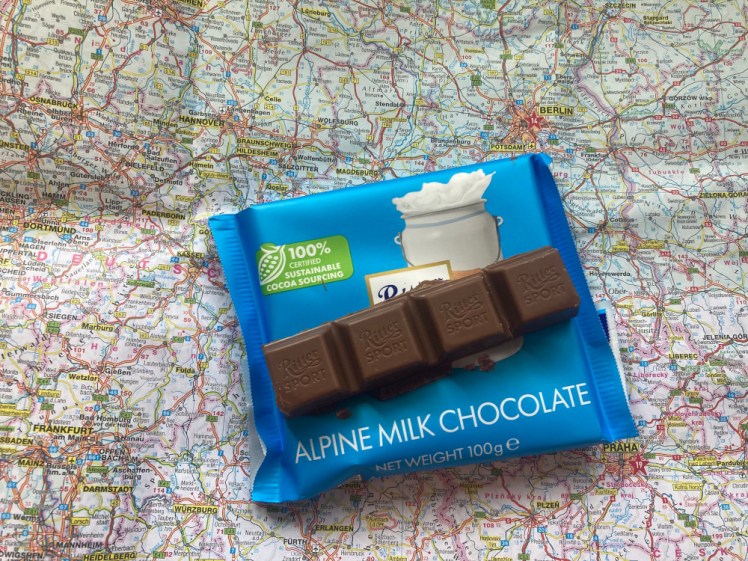Keeping up the theme of the last few (and next few) weeks, this month’s chocolate contest is between Germany and Poland (yes, I’m renaming it for this month). Actually, I did really badly at buying chocolate while I was away. I mostly lived off Milka. The German Ritter for this post came from Lidl and the Polish E Wedel I bought at the airport just before I went through security. That’s why it looks really battered. Please try to see past that!

In the dark blue corner, yes, we have Polish E Wedel, which describes itself as “the strongest chocolate brand in Poland”. The company was founded in 1851 in Warsaw, was bought by PepsiCo in 1991, sold to Cadbury’s in 1999 and then belonged to Kraft briefly between March and June 2010 when they bought Cadbury’s. Wedel now belongs to South Korean corporation Lotte. I’m taking most of this as a good sign. If you’ve read this series before, you know that Kraft/Mondelez buys up all the good chocolate. The fact that they promptly sold it is simply because the EC wouldn’t let Kraft own such a large share of the Polish chocolate market, what with the combination of Wedel brands, Cadbury brands and Kraft’s existing brands.

In the light blue corner is German Ritter. This one doesn’t have quite such a complicated history. Alfred Ritter GmbH is a private family-owned company that has never been sold to multinational food conglomerates. It was founded in 1912 and the Ritter Sport brand was created in 1932. It apparently gets its name because it’s supposed to be the weight of a standard chocolate bar but fit neatly into the pocket of a sport jacket. Now, that I like. Chocolate literally designed to be easily transportable.

First things first, the smell that wafted out when I opened the Wedel packet was amazing. How am I supposed to sit calmly and take photos and have a good look when it smells that good?? The Wedel comes in slightly larger squares than the Ritter but the Ritter is more of a cube than a square. Everyone knows shape has an effect on taste – it’s all about surface area, giving more area for more flavour. The Wedel is also a darker shade of brown than the Ritter. In fact, the Ritter almost looks quite anaemic in comparison.
And the taste?

My first response to the Wedel was that it tastes “ok”. It’s a bit like hot chocolate – almost chocolatey than chocolate. Then I tried the Ritter. That one took a moment to hit me properly with the flavour, the notes being “less rich… and yet more rich?”. Does it taste a little more powdery than Wedel? Yes, I think it does. I think Wedel has a better texture. Does it taste a little more artificially chocolatey than Ritter?

The conclusions I eventually drew were that Ritter is more milky, which isn’t really a surprise when this is “Alpine milk”. Not that Wedel is holding back on the milk, judging by the packet, but the result is thicker and more chocolatey. And which one do I prefer?
Wedel. That surprised me because usually the chocolate I already know is the better one, it’s rarely the underdog that wins these contests but in this case, Wedel was ahead by a country mile. So, if you find yourself in Poland, grab a bar of Wedel. It’s better than German chocolate.